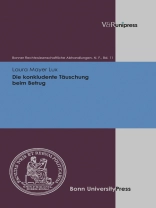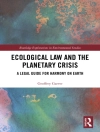Die meisten Definitionsversuche von konkludenter Täuschung kommen über Leerformeln – etwa die »Verkehrsauffassung« – nicht hinaus. Im Gegensatz dazu kann Laura Mayer Lux aufzeigen, dass die schlüssige Täuschung eine aktive Täuschung ist, die einer unwahren Behauptung über betrugsrelevante Tatsachen entspricht. Mithilfe der analytischen Sprachphilosophie begründet die Autorin Betrug als »Kommunikationsdelikt« theoretisch und bestimmt Täuschung mit Bezug auf die kommunikative Interaktion zwischen Täter und Getäuschtem. Vor diesem Hintergrund wird deutlich, dass die konkludente Täuschung als »semantischer Schluss« bezeichnet werden kann, also als ein Schluss, der im Hinblick auf die Bedeutung des fraglichen kommunikativen Aktes konstruiert wird, und als »indirekte unwahre Informationsbehauptung« verstanden werden muss.
This study seeks to contribute, through the analytical philosophy of language, to a theoretical framework of fraud as a ‘communication offense’. It also aims at determining the meaning of the deceit element – particularly, implied or tacit deceit – with reference to the communicative interaction between the offender and the victim of the deception. A thorough study of definitions of tacit deceit reveals that most researches come out with ‘empty formulas’ – such as ‘prevailing public understanding’ – which are unable to specify the deceit element. By contrast, this study argues that tacit deceit should be referred to as an active deceit. That is, an untrue statement about fraud-relevant facts, i.e., information which, depending on the economic relationship, may act as a determining factor for a rational disposition of property. Finally, this research clarifies tacit deceit as a ‘semantic deduction’, i.e., a deduction that is constructed in view of the meaning of the communicative act under analysis, and proposes that tacit deceit should be interpreted as an ‘indirect false assertion about information’
Over de auteur
Prof. Dr. Wulf-Henning Roth lehrt Bürgerliches Recht, Internationales Privatrecht, Rechtsvergleichung sowie deutsches, europäisches und internationales Wirtschaftsrecht an der Universität Bonn. Dort ist er Direktor des Instituts für Internationales Privatrecht und Rechtsvergleichung sowie des Zentrums für Europäisches Wirtschaftsrecht.












